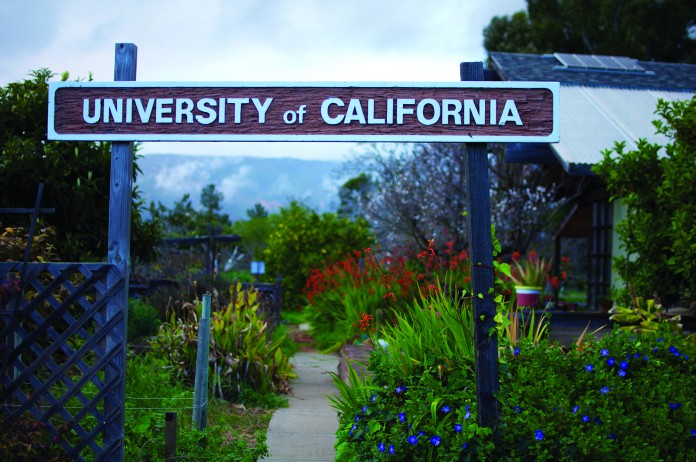Kelly Jones
As part of UCSB’s continuing mission to use more sustainable resources, UCSB Residential Dining Services held a meeting discussing the progress they have made and the new projects they will be tackling in the upcoming year. According to the Campus Sustainability Plan, which was approved by Chancellor Yang in April 2008, the goal is to “strive to (sic) a local and organic closed loop food system by observing sustainability criteria for all food purchasing, preparation and service, cleaning, waste disposal, and purchase of equipment and supplies.” The Dining Commons has already been implementing several sustainable measures over the past four years, but will be setting the bar even higher for 2010.
One such measure is a plan to make at least one dining common meatless on campus. On Monday, March 1st a trial run will be held where no meat will be served, in an effort to promote healthy eating habits on campus and to cater to vegetarians. Eventually, Dining Services hopes to create a beefless dining common as well.
Another area Dining Services is looking to improve is their composting program. Currently, ninety percent of the wasted generated by the UCSB Dining Commons is composted, but first it must be transported to a composting facility in Santa Maria, before it is sent back to UCSB to be reused in fertilizer and other useful applications. This system ensures that leftovers from the Dining Commons do not go to waste, but Bonnie Crouse, Assistant Director of Residential Services, believes it could operated better. Presently, Dining Services is trying to find a way to manage composting at UCSB in order to cut back on transportation fees and fuel-usage. Discussions currently underway with Marborg, the company employed to manage and transport the compost, will determine if a composting facility can be set up on an unused area of campus.
Already in place is tray-less dining, which effectively cuts back on waste, water use, and cost. When students are forced to carry all of their plates and cups, they tend to use less dishware, reducing the amount of water needed to clean up. Crouse says that students often use multiple cups or plates just to fill a tray, but with tray-less dining, students only carry what they are willing to eat.
“At the beginning, it was inconvenient, but at this point it’s not that big of a deal,” said Keith Farley, a second year UCSB student. “It cuts down on the amount of food wasted because you can’t carry as much.”
Fair trade coffee and cage-free eggs are also a new introduction to student choices. This is part of a campaign to increase organic products used in the Dining Commons, as well as locally grown produce. At present, organic and local products are not always labeled. “I notice sometimes, but I don’t pay much heed to it,” Farley said. “There’s so little of it, you end up eating non-organic products anyways.”
Interns for The Green Initiative Fund (TGIF) are marketing sustainable plans, and advertising eco-friendly projects to students. “Sustainability has really become a big part of what we do now,” says Crouse.




















Comments are closed.